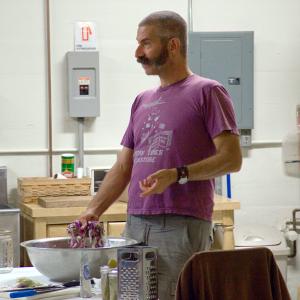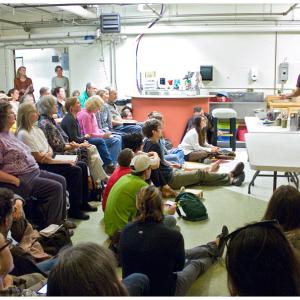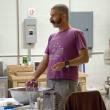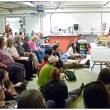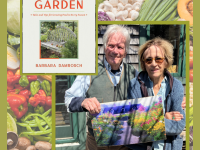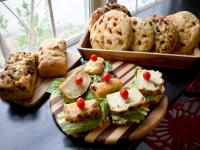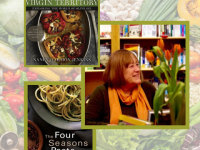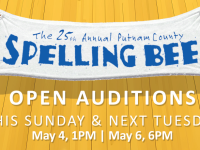Fermentation guru makes kraut and conversation in Belfast
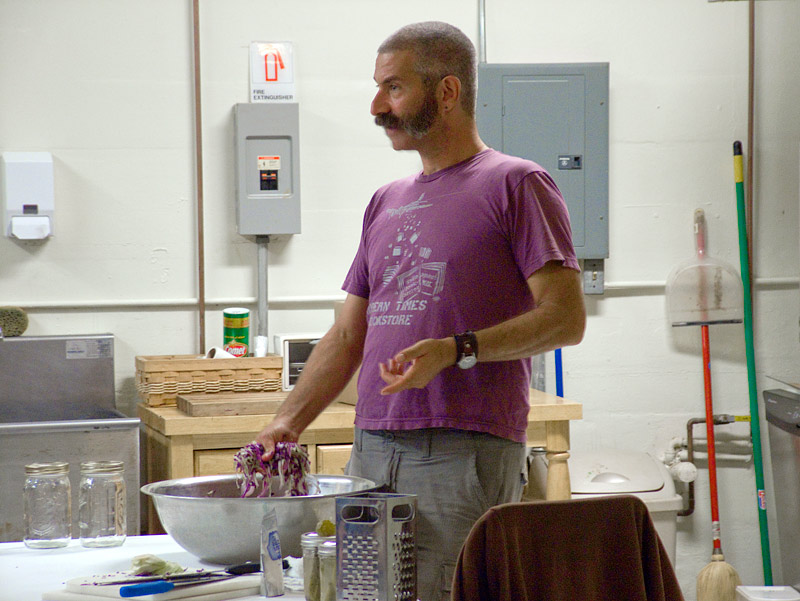 Fermentation expert Sandor Katz prepares a batch of sauerkraut during a talk the age old food preservation method at Waterfall Arts, Sept. 19. (Photo by Ethan Andrews)
Fermentation expert Sandor Katz prepares a batch of sauerkraut during a talk the age old food preservation method at Waterfall Arts, Sept. 19. (Photo by Ethan Andrews)
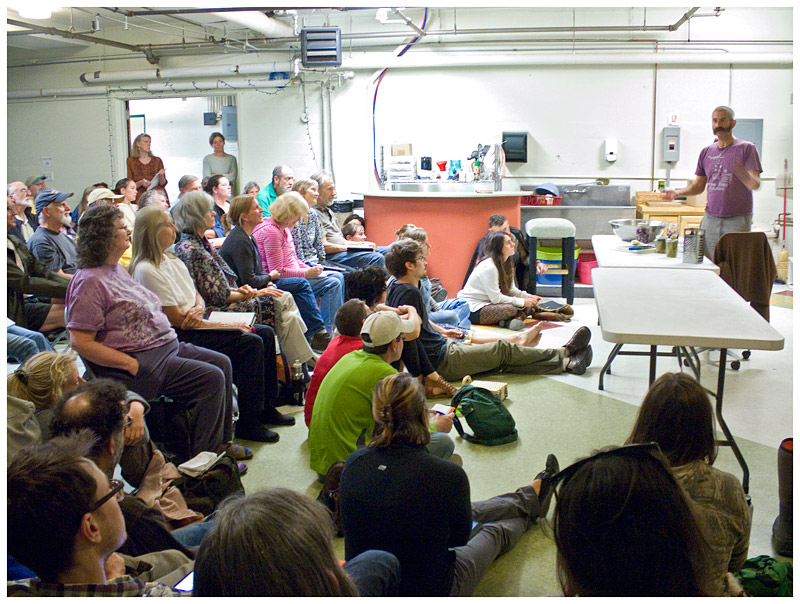 The chance to hear fermentation expert Sandor Katz drew a crowd of around 100 people to Waterfall Arts, Sept. 19. (Photo by Ethan Andrews)
The chance to hear fermentation expert Sandor Katz drew a crowd of around 100 people to Waterfall Arts, Sept. 19. (Photo by Ethan Andrews)
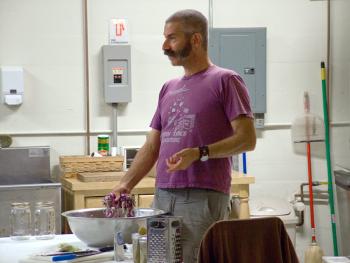 Fermentation expert Sandor Katz prepares a batch of sauerkraut during a talk the age old food preservation method at Waterfall Arts, Sept. 19. (Photo by Ethan Andrews)
Fermentation expert Sandor Katz prepares a batch of sauerkraut during a talk the age old food preservation method at Waterfall Arts, Sept. 19. (Photo by Ethan Andrews)
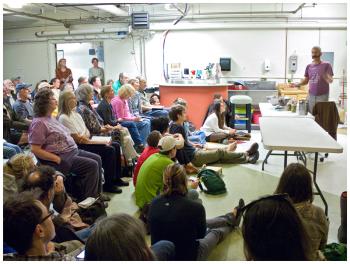 The chance to hear fermentation expert Sandor Katz drew a crowd of around 100 people to Waterfall Arts, Sept. 19. (Photo by Ethan Andrews)
The chance to hear fermentation expert Sandor Katz drew a crowd of around 100 people to Waterfall Arts, Sept. 19. (Photo by Ethan Andrews)
BELFAST - After the publication of his book Wild Fermentation in 2003, Sandor Katz loaded his car with sauerkraut and set out to spread the word on the benefits of preserving food with bacteria. Along the way, he learned to what a large degree fermentation is a matter of taste.
At one stop, an Austrian woman accustomed to the soft texture of heavily fermented sauerkraut, likened Katz’s crunchy samples to coleslaw. When he ran out of the sauerkraut he’d brought from his home in Tennessee, Katz swallowed his pride and offered his Canadian audience a comparatively unripe three-week-old batch of kraut. They declared it the best they’d ever tasted.
Over the last decade, Katz has become the face of a do-it-yourself fermentation revival he arguably started, but you wouldn’t necessarily know this from hearing him speak. Sandor Katz is like your best friend who happens to know a lot about fermenting food.
Speaking to a crowd of 100 people at Waterfall Arts in Belfast on Thursday, he expressed genuine surprise at how many had come to the presentation and apologized for not bringing enough books. Katz started from the beginning and deftly fielded questions from novice and experieced fermenters alike, adding explanations of tongue-twister bacterial strains and elements of distant regional cuisines as needed.
And so it went. Ten years after Wild Fermentation, the man affectionately called “Sandorkraut” talked a group of strangers through the basics of fermentation, gesturing with one hand and squeezing the water out of a bowl of sliced cabbage with the other, demonstrating the basic preparation of sauerkraut.
“There’s all sorts of documentation of insects, birds, animals being drawn to the smell and flavor of fermenting fruit,” he said, referring to naturally occuring fermentation. “There’s even really interesting documentation of animals getting really disoriented from eating a lot of fermented fruit.”
What humans have been able to do, Katz said, is fine tune the process by controlling the conditions.
The range of foods that involve some fermentation goes far beyond tangy treats like sauerkraut and pickles. Most soy products including tofu and miso are fermented, as are olives, coffee and cocoa beans. Cheese and yogurt have origins in humans’ attempts to preserve milk. Bread uses fermentation in the rising process, though the bacteria are killed in baking. Beer and wine are the result of refined fermentation processes, and the list goes on.
In many places, foods are fermented to remove toxins that render a staple food like the cassava otherwise inedible.
Fermentation’s historical longevity owes somewhat to the fact that it’s extremely safe. Katz said he was unaware of anyone ever dying as a result of eating something that wasn’t fermented right. Screwing up the process generally produces strong visual hints like mold, or just makes it smell or taste bad.
“Not every transformative action of microbes results in something you want to put in your mouth,” he said.
Katz was a keynote speaker at the Maine Organic Farmers and Gardeners Association’s Common Ground Country Fair on Friday, Sept. 20. Additionally, he is scheduled to give a talk titled “Introduction to Fermentation” at the fair on Saturday, Sept 21 at 2 p.m. The talk will be followed by a Q&A at 4 p.m.
His presentation in Belfast was sponsored by the Belfast Co-op.
Ethan Andrews can be reached at news@penbaypilot.com
Event Date
Address
United States

